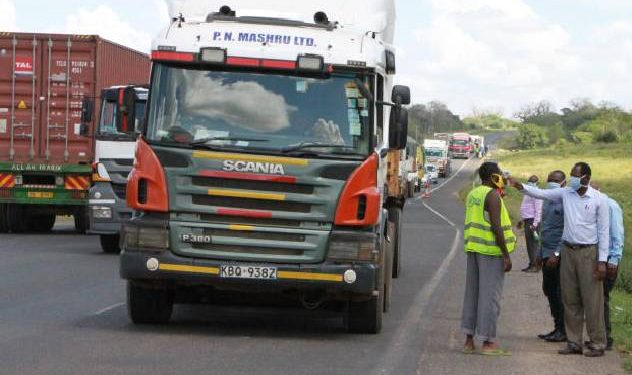Kenya Transporters Association (KTA) has applauded the government of Uganda for giving COVID 19 vaccinations for free to truck drivers regardless of their nationalities or age.
In a statement, KTA said that in its conversation with the Port Health in Uganda, if 80 percent of the truck drivers were vaccinated, there would be no need to carry out the mandatory testing.
In a statement addressed to the Ministry of Health in Kenya recently, the KTA secretariat said that truck drivers owing to their nature of work and movement was a vulnerable group.
“We appreciate the government’s efforts in ensuring the orderly vaccination of the most vulnerable sections of the society. We also understand that the total population cannot be vaccinated at the same time because of the current limited resources,” the statement said.
It added; “It is our opinion that truck drivers, especially those travelling to other partner states be included in this group of the most exposed individuals to COVID-19 because of their interactions with various groups of people.”
Apart from embracing various protocols by the regional states, East Africa Community (EAC) introduced the Regional Electronic Cargo and Drivers Tracking System (RECDTS) to issue common electronic COVID-19 certificates.
Over 72,000 truck drivers across the East Africa region have been registered by the App. The software is available on the Google Play Store and is monitoring at least 90 percent of truck drivers across East Africa.
TMEA partnered with key government agencies and private sector players, including the Federation of East African Freight Forwarders Associations (FEAFFA), to develop the App to address serious delays at border posts lasting for up to 2 weeks.
The App was launched in September 2020 by the EAC Secretariat in partnership with TMEA and the European Union, which has been key in the fight against Covid-19, especially among cross border traders.
During the initial days of the COVID-19 pandemic, truck drivers were super spreaders and because of their cross-border movements, they faced many challenges to move around the region since EAC had not adopted common protocols on how to deal with COVID-19 pandemic.
Prior to the roll-out, cross border truck drivers had been spending many days in long queues at border posts, which had disrupted both trade and movement of goods, services and people.





